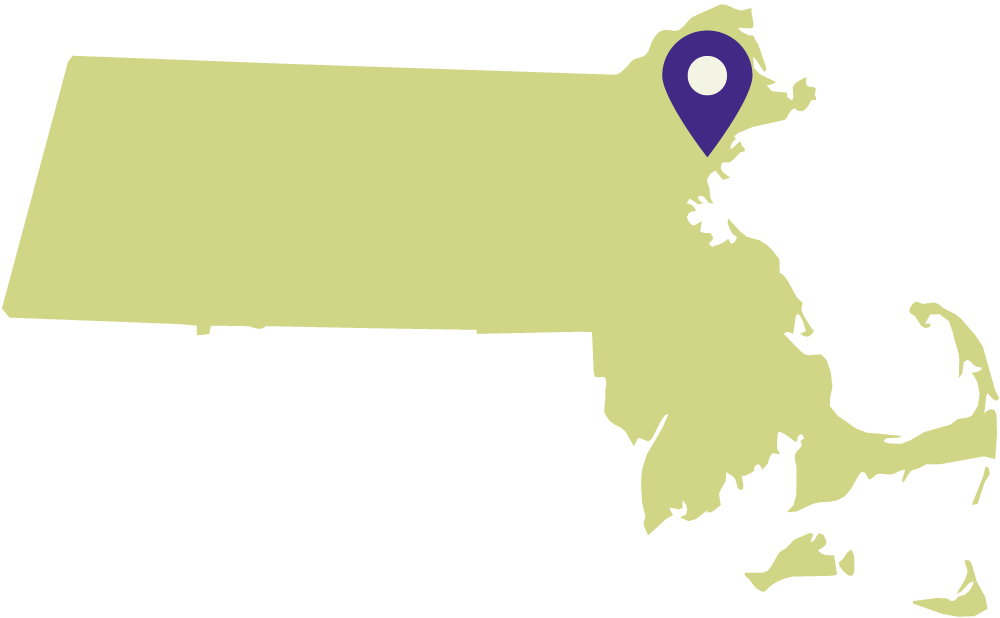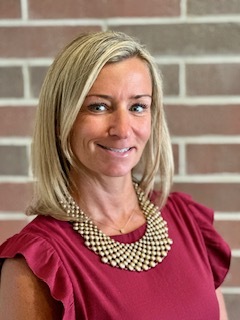
Paul Revere Innovation School in Revere, Massachusetts has implemented multiple Collaborative Classroom programs. We had the pleasure of speaking with Jennifer Howard, literacy coach, about how the school is developing a strong teacher learning community to help support student growth.
Tell us a little about yourself, your school and district, and the students that you serve.
My name is Jennifer Howard, and I am the literacy coach at the Paul Revere Innovation School in Revere, Massachusetts.
I’ve been an educator for 13 years; I taught fourth, first, and then second grade before making the shift to coaching.

Our school is a public school within the Revere Public School District. We’re located northeast of Boston, and serve a diverse population in grades K–5.
We receive Title 1 funding and we have innovation status. This status gives us some key decision-making autonomy for things such as curriculum and professional learning.
What is the most rewarding part of being an educator for you?
Seeing growth across our community of learners—with both teachers and students—is most rewarding to me.
With students, it’s witnessing those “light bulb” moments when reading clicks. You can see and feel the student’s excitement about their own learning.
When student growth occurs, it really goes hand-in-hand with the teachers, too.
When student growth occurs, it really goes hand-in-hand with the teachers, too.
Part of that student growth is the result of our teacher learning community where we have a strong culture, collaboration, and openness to learning and growing professionally. We have found the benefit to having the entire staff attend and participate in our weekly professional learning sessions so that everyone learns and is aware of what is happening outside of their own grade level.
To have the entire staff in professional learning sessions where they plan and collaborate together within and across their grade-level teams builds relationships. We have built strong relationships and positive attitudes and culture towards learning as adults/teachers/professionals; I think our students can see that.
How did your school/district become interested in Being a Writer?
We learned about Collaborative Classroom, and specifically the Being a Writer program, when we visited a neighboring school district and observed the program in action.
How long has your school/district been implementing Collaborative Classroom programs? Tell us a little about the implementation.
Our school did a rollout of Collaborative Classroom programs over a few years.
We began with the implementation of Being a Writer, which also happened when the pandemic began and we were teaching fully remote.
Because of the unique circumstances of that school year, it really was more like dabbling in the program rather than teaching it with fidelity. All things considered, student and teacher feedback was still very positive. The students loved the stories, were making connections, and were engaged in writing.
We added SIPPS in the winter of that same school year. At that time we were still remote, but teachers reported to the building a few days a week. I remember that it was a learning process for our team. The program was new to us, so we’d get together and practice the routines and how to continuously blend.
SIPPS instruction began fully remote in January of that year, and by March students were hybrid.
We were surprised by the gains we saw in foundational skills through progress monitoring. It also surprised us as we transitioned from remote to hybrid (while wearing masks) that the instruction remained seamless—the routines were well established and the students knew what was coming. Everything just flowed.
It also surprised us as we transitioned from remote to hybrid (while wearing masks) that the instruction remained seamless—the routines were well established and the students knew what was coming.
By June, we saw so many gains that we decided to use SIPPS during summer school as well.
We also began a Being a Reader implementation in grades K–2 and added Making Meaning in grades 3–5. This timing was really perfect because the programs ended up helping us figure out how to come back (with masks on) and try to be normal.
The embedded social and emotional learning was essential in bringing students back to the classroom setting. The “Turn to Your Partner” and community building elements in the program supported the return.
What do you appreciate about your Collaborative Classroom programs? What do teachers appreciate about it?
For me, the relationships and support I have from Collaborative Classroom are so appreciated.
As a school, we’ve really developed a strong relationship with the literacy curriculum itself, which has made our implementation stronger. The consistency with instructional routines, the social emotional development, and the use of real books students can see themselves in have fostered student engagement.
I appreciate the scaffolded support in areas such as Independent Work, where students have choice and participate in mixed ability grouping, as well as in the alignment of foundational skills instruction across core and intervention. Students are able to make connections between and across the programs, which means they are getting more practice with the skills that they need.
Students are able to make connections between and across the programs, which means they are getting more practice with the skills that they need.
Teachers also appreciate the confidence that the instructional routines provide—how they build confidence in their students and in turn, students want to read more. The routines also afford the most reluctant students with the security of knowing what’s coming when they participate in instruction.
As a literacy coach, what are your go-to resources?
I’ve learned to carry the Implementation Handbook with me no matter what unit we’re working on. I jumped right over it my first year, but in my second year I have it with me all the time. I use it as my first place to look for answers when teachers ask questions.
The RTI/MTSS Guidance document is another resource that I reference and use often. I appreciate that it’s updated often, and it supports us in making intentional decisions for students.
The Instructional Cues document has also helped give everyone the language and cueing (but not too much language) to be concise and effective with routines. The correction routines are also provided, which helps the teachers guide students in doing most of the work most of the time.
What have you noticed about students’ learning and engagement? What have teachers noticed?
We’re keeping a close eye on students’ academic gains, but apart from that, what really stands out is that when we visit classrooms, students are engaged.
I truly feel that they have become a community of readers and writers where they are willing to take risks.
I truly feel that they have become a community of readers and writers where they are willing to take risks.
We see students empowered by their ability to make choices—in the books they read, the Independent Work stations they select, who they are working with, and more—and this really impacts engagement.
We are noticing that in addition to reading more, students want to talk about their books, and they enjoy selecting books and seeing themselves within the books. We credit this on-task engagement to the structures and expectations that the teachers provided from the program lessons.
At first, we felt nervous—it was scary to give the kids so much freedom of choice—but we quickly found power in it. The students are more invested when they make choices.
How has working with Collaborative Classroom shifted teaching practices and/or professional learning in your school/district?
One of the most notable things over the past 3.5 years in regard to professional learning is that our entire faculty has really formed a learning community.
The professional learning sessions are attended by all staff. This affords everyone the opportunity to share different lenses, connections, and experiences and think about how what they’re learning applies to their own grade levels, as well as how it all vertically connects across all grades.
I’d say there are several shifts in teacher practices—we’ve eliminated paper and pencil tests at the end of each unit, we’ve created paths for students to have autonomy and make choices, and students are reading real books and publishing their own writing pieces. They are sharing what they’ve read and written with others.
What thoughts or insights would you share with a school/district that is considering a Collaborative Classroom program?
If you’re looking for student engagement and gains in literacy skills, then Collaborative Classroom programs are a must! The programs build student confidence and ability through choice.
Our teachers are such a big part of our implementation success, too. They believe in and trust the programs—they are invested in using them in Year 2, and together we continue to learn new things every day.
Related:
Read a research brief about Paul Revere Innovation School
Learn more about SIPPS
Learn more about Being a Writer
Read Inside KIPP Indy: How SIPPS Revolutionized Reading Instruction
Read How Being a Writer Is Developing Young Writers at Cary Reynolds Elementary in Georgia
